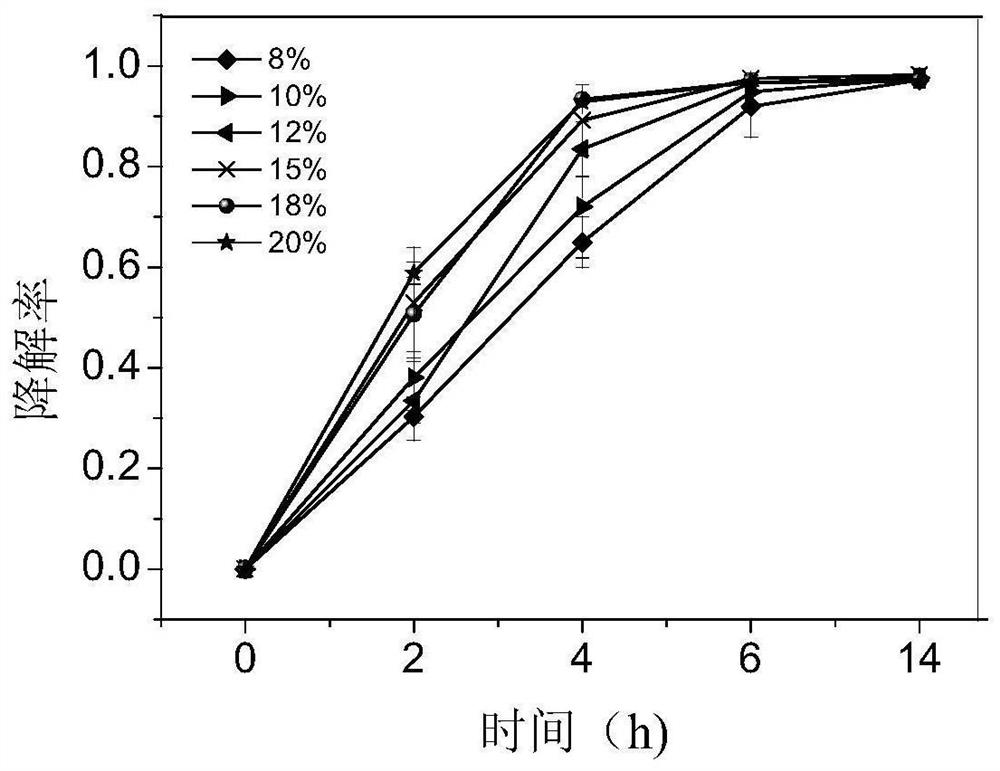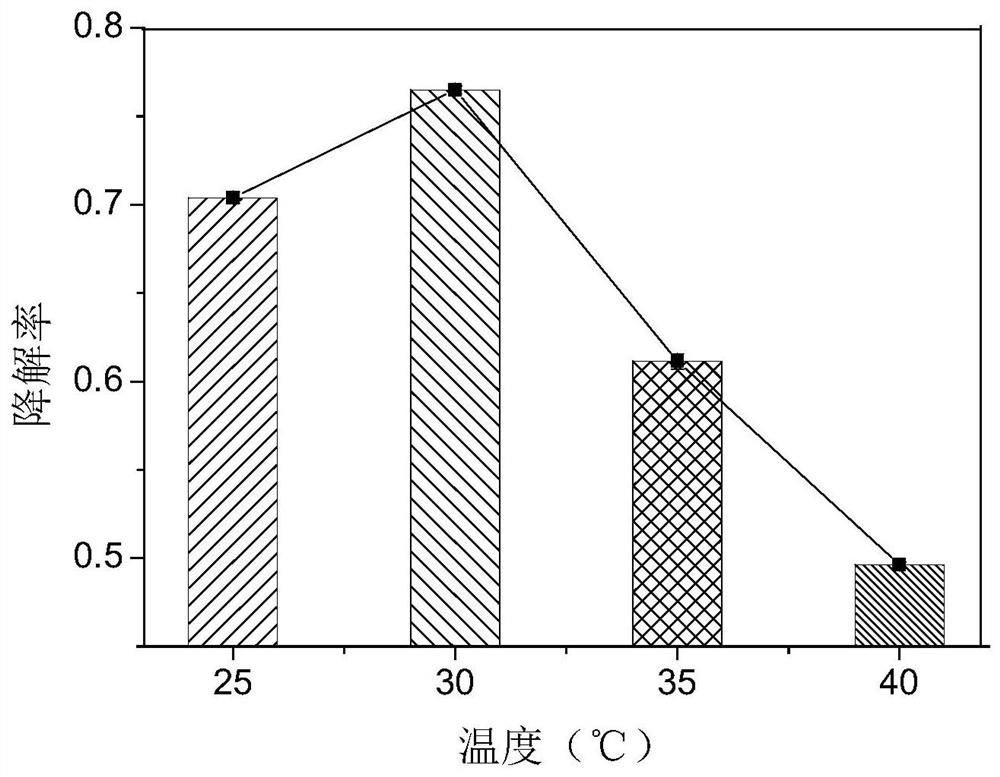Bacillus amyloliquefaciens, bacteria agent and its application and method for degrading formaldehyde
A technology for dissolving starch spores and bacilli, applied in the field of microorganisms, can solve the problems of formaldehyde tolerance and poor degradation effect, achieve excellent degradation effect, reduce investment and operating costs, and reduce interference.
- Summary
- Abstract
- Description
- Claims
- Application Information
AI Technical Summary
Problems solved by technology
Method used
Image
Examples
Embodiment approach
[0057] According to a specific embodiment of the present invention, the inorganic salt comprises sodium chloride, potassium dihydrogen phosphate, disodium hydrogen phosphate, ammonium chloride, magnesium sulfate, calcium chloride and ferrous sulfate.
[0058] Wherein, the present invention has no special limitation on the amount of the inorganic salt added, which can be determined according to the type and content of the inorganic salt in the formaldehyde-containing environment. For example, take NH 4 Cl 0.5-4g·L -1 , NaCl 4-8g·L -1 , KH 2 PO 4 0.2-0.8g·L -1 , Na 2 HPO 4 0.2-0.8g·L -1 , CaCl 2 0.01-0.05g·L -1 , MgSO 4 0.1-0.5g·L -1 For example, based on each kilogram of the environment containing formaldehyde and / or the environment containing formaldehyde, the amount of the above-mentioned inorganic salt mixture can be 1-3ml / day.
[0059] In the present invention, when the formaldehyde-containing environment is soil, in order to further promote the degradation e...
preparation example
[0081] This preparation example is used to prepare the activated seed solution used in the following examples
[0082] The LB medium was sterilized at 121°C for 20 min and cooled to room temperature. Take Bacillus amyloliquefaciens strains from the refrigerator at -80°C, inoculate them in the above-mentioned sterilized LB medium, and cultivate them at 170rpm and 30°C for 12 hours to obtain activated seed liquid. The number of viable bacteria was determined to be 7.88× 10 8 cfu / mL.
Embodiment 1
[0084] This embodiment is used to illustrate the impact of culture conditions on the ability of bacterial strains to degrade formaldehyde according to the present invention
[0085] Get the activated seed solution after activation and inoculate it into carbon-free medium with an initial concentration of formaldehyde of 20 mg / L according to different inoculum amounts (8%, 10%, 12%, 15%, 18%, 20%) respectively. Three parallels were set up for each gradient, and the blank culture medium was used as the control. The shaker flask was cultured in a constant temperature shaker with a rotation speed of 170r / min and a temperature of 30°C. Samples were taken at 2h, 4h, 6h and 14h to determine the formaldehyde concentration, OD600 and pH in the medium.
[0086] Take the bacterial solution cultivated to the logarithmic phase and add it to the sterilized and cooled medium with an initial formaldehyde concentration of 300 mg / L at the optimal inoculum amount, and select different culture tem...
PUM
| Property | Measurement | Unit |
|---|---|---|
| tolerance concentration | aaaaa | aaaaa |
| concentration gradient | aaaaa | aaaaa |
Abstract
Description
Claims
Application Information
 Login to View More
Login to View More - R&D
- Intellectual Property
- Life Sciences
- Materials
- Tech Scout
- Unparalleled Data Quality
- Higher Quality Content
- 60% Fewer Hallucinations
Browse by: Latest US Patents, China's latest patents, Technical Efficacy Thesaurus, Application Domain, Technology Topic, Popular Technical Reports.
© 2025 PatSnap. All rights reserved.Legal|Privacy policy|Modern Slavery Act Transparency Statement|Sitemap|About US| Contact US: help@patsnap.com



